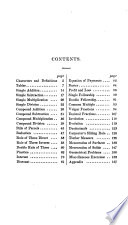 | William Watson (of Beverley.) - 1845 - 188 pages
...mentioned in it. 3. — Multiply the second and third terms together and divide the product by the first, the quotient will be the answer to the question in the same name the second term was brought into. The method of proof is by inverting the question. EXAMPLES.... | |
 | James W. Kavanagh - 1846 - 304 pages
...after the third, and the marks (: :) for equality between the means. Having now arranged the terms, we multiply the second and third terms together, and divide their product by the first, the resulting quotient, 98, being the reiuired answer in shillings. The pupil is to recollect that,... | |
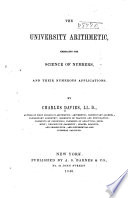 | Charles Davies - Arithmetic - 1846 - 370 pages
...proportion to be found, .and make the third statement in the same manner as the second was made. III. Then multiply the second and third terms together, and divide their product by the product of the first terms, and the quotient will be the answer sought. EXAMPLES. Let us first resolve... | |
 | Roswell Park - Best books - 1847 - 626 pages
...placed last of those two, and the greater of them will be the first. The question being thus stated, multiply the second and third terms together, and divide their product by the first; and the quotient will be the fourth term, or answer sought. A Compound Proportion, including the solution... | |
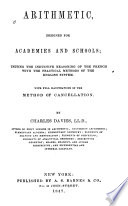 | Charles Davies - Arithmetic - 1847 - 368 pages
...made. 195. How may questions involving five &c. terms be stated and '•'ed? Give the rule. III. Then multiply the second and third terms together, and divide their product by the product of the first terms and the quotient will be the answer sought. EXAMPLES. 1. If a family of... | |
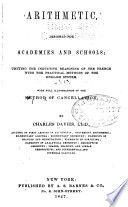 | Charles Davies - Arithmetic - 1847 - 368 pages
...proportion to be found, and make the third statement in the same manner as the second was made. III. Then multiply the second and third terms together, and divide their -product by the product of the first terms and the quotient will be the answer sought. EXAMPLES. 1. If a family of... | |
 | William Vogdes - Arithmetic - 1847 - 324 pages
...name mentioned. 2. Multiply the second and third terms together, and divide the product by the first; the quotient will be the answer to the question in the same denomination as the third term. 3. If either of the terms consists of fractions, state the question as in whole... | |
 | Roswell Chamberlain Smith - Arithmetic - 1850 - 314 pages
...and second terms to the same denomination, and the third term to the lowest denomination in it, then multiply the second and third terms together, and divide their product by the first, the quotient will be the fourth term or ansiver, in the same denomination wit/i the third term. CONTRACTIONS... | |
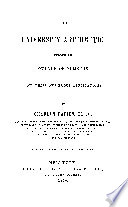 | Charles Davies - Arithmetic - 1850 - 412 pages
...proportion to be found, and make the third statement in the same manner as the second was made. IIÍ. Then multiply the second and third terms together, and divide their product by the product of the ßrst terms, and the quotient will be the answer sought. EXAMPLES. Let us first resolve... | |
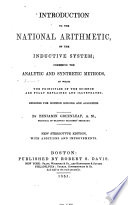 | Benjamin Greenleaf - 1851 - 332 pages
...denomination mentioned in either, and the third term to the lowest denomination mentioned in it. 3. Multiply the second and third terms together, and divide their product by the first, and the quotient is the answer in the same denomination to which the third is reduced. 4. If anything... | |
| |